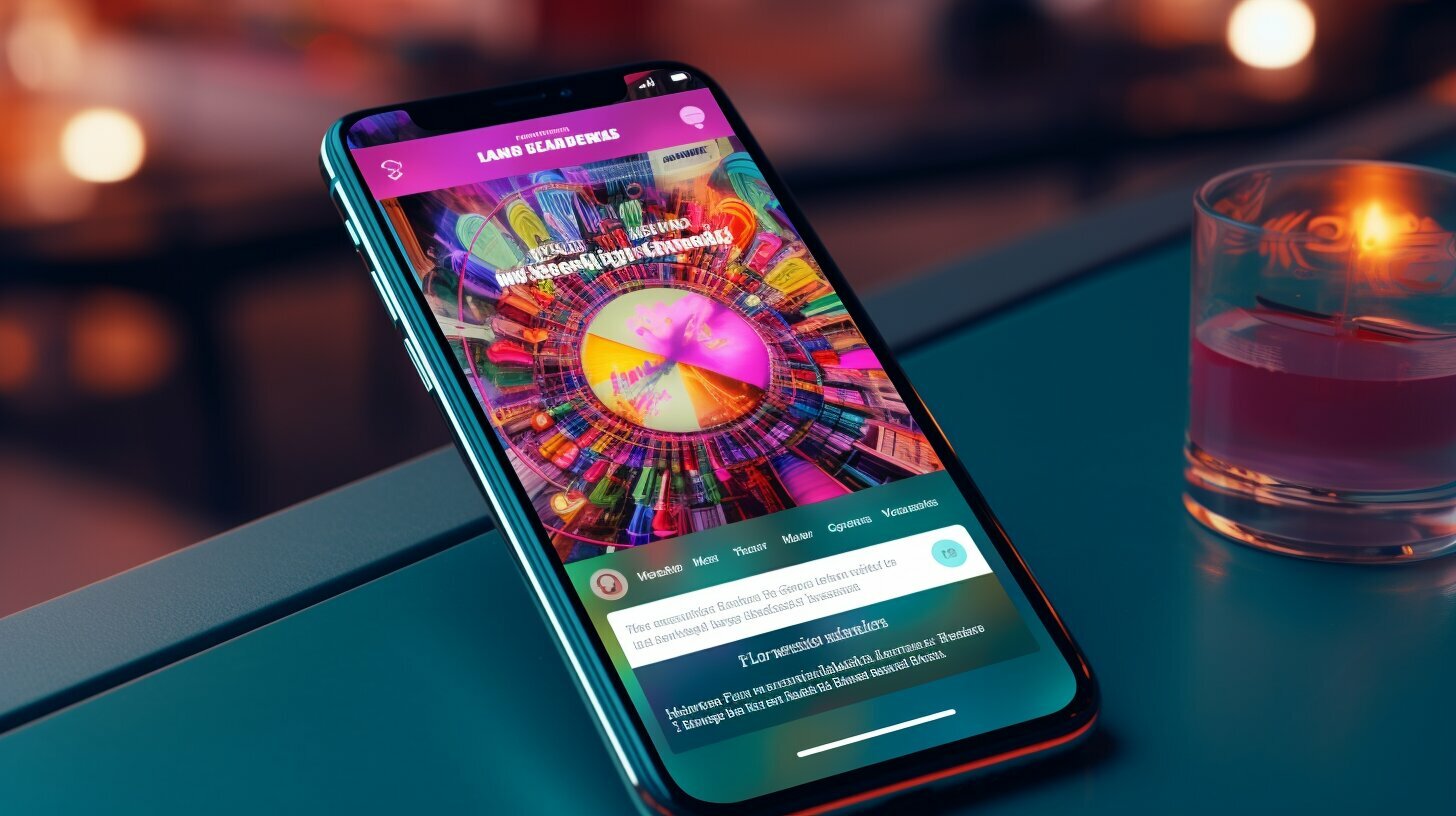In today's digital age, having a well-designed and functional website is crucial for the success…
Unlock Success with Mobile-Friendly Web Design Today
In today’s digital landscape, having a mobile-friendly web design is crucial to the success of your online presence. With a responsive and user-friendly website, you can effectively grab your visitor’s attention and boost conversion rates. A mobile-friendly web design refers to a design that is optimized for mobile devices, such as smartphones and tablets. With mobile optimization, your website adapts to different screen sizes and functions seamlessly, offering a great user experience.
Responsive web design is another important aspect of mobile-friendly design. It ensures that your website responds to different devices and screen sizes, making it easy for visitors to navigate and use your site. Furthermore, a user-friendly website with easy navigation, intuitive design elements, and faster load times can significantly increase engagement and keep visitors on your website for longer.
Mobile website design and mobile-first web design are other terms used in the industry to describe a mobile-friendly website. Responsive design for mobile devices is also crucial and ensures that your call-to-action buttons, forms, and checkout processes are optimized for smaller screens, maximizing your chances of converting mobile users into customers. Mobile web development focuses on creating a seamless experience across various devices and platforms, ensuring that your website functions flawlessly on both iOS and Android devices.
By embracing mobile-friendly web design, you can future-proof your website and stay ahead of the competition. Keep reading to learn why mobile-friendly web design matters and how you can implement it on your website.
Why Mobile-Friendly Web Design Matters
Having a mobile-friendly website design is crucial for the success of your online presence. With mobile devices becoming the preferred way to browse the internet, a responsive web design has become a necessity. A mobile-friendly web design refers to a website that is designed to function seamlessly on all mobile devices, regardless of their screen size. So why does mobile-friendly web design matter? Here are a few reasons:
- Mobile optimization: A significant percentage of internet users access websites through their mobile devices. If your website is not optimized for mobile devices, you will miss out on a large portion of potential visitors.
- Responsive web design: A responsive web design ensures that your website adapts and functions seamlessly across different screen sizes, offering a great user experience. This leads to increased engagement and a higher chance of converting visitors into customers.
- User experience: A user-friendly website that is optimized for mobile devices offers easy navigation, faster load times, and intuitive design elements. This improves user experience and leads to better engagement metrics.
Mobile optimization and responsive web design are essential elements of a successful digital strategy. Adopting a mobile-friendly web design approach ensures that your website functions flawlessly on all devices and captures the attention of mobile users.
The Benefits of Mobile-Friendly Web Design
Developing a user-friendly website that is optimized for mobile devices offers numerous benefits. Firstly, it improves user experience by providing easy navigation, faster load times, and intuitive design elements.
Did you know that 88% of users are less likely to return to a website after a bad user experience?
Mobile website design takes into consideration the unique needs and behaviors of mobile users, increasing engagement and keeping visitors on your site for longer. By adopting a mobile-first web design approach, your website is designed with mobile users in mind from the start, making it more accessible and easier to use.
Not only does mobile-friendly web design enhance user experience, but it also has a positive impact on your conversion rates. When visitors have a positive experience on your site, they are more likely to make a purchase, fill out a form, or complete a desired action. Therefore, a responsive design for mobile devices ensures that your call-to-action buttons, forms, and checkout processes are optimized for smaller screens, maximizing your chances of converting mobile users into customers.
Ultimately, investing in mobile optimization and user-friendly design elements will set your website apart from competitors and establish a strong online presence.
The Impact on Conversion Rates
A mobile-friendly website design can have a tremendous impact on your conversion rates. Given that mobile devices account for a significant percentage of web traffic, failing to cater to this audience could be detrimental to your business. However, with responsive design for mobile, you can enhance user experience, and subsequently, increase your chances of conversion. Optimizing your call-to-action buttons, forms, and checkout processes for mobile devices ensures that you make it as easy as possible for users to convert. A mobile-friendly website design positions your business as technologically advanced and in tune with the needs of your target audience, inspiring confidence and trust.
Mobile-Friendly Design Best Practices
Creating a mobile-friendly website involves implementing best practices to ensure your visitors have a positive user experience. Here are some tips:
Optimize Images and Media
Use compressed images and media files to ensure fast loading times on mobile devices.
Readable Fonts and Font Sizes
Choose clear and legible fonts that are easy to read on smaller screens. Ensure font sizes are large enough to be easily readable.
Design Touch-Friendly Buttons and Menus
Create buttons and menus that are easily clickable on touch screens, with enough spacing between them to avoid accidental clicks.
Focus on Responsive Design for Mobile
Adopting a responsive design for mobile devices ensures that your website functions seamlessly across different screen sizes and platforms.
Mobile Web Development
Collaborate with experienced web developers to ensure that your website is optimized for mobile devices. This may include implementing mobile-specific features such as touch gestures and location-based services.
The Future of Mobile-Friendly Web Design
As the world becomes increasingly mobile-centric, it’s crucial to adopt a mobile-first web design approach. Responsive web design will continue to be essential to ensure seamless functionality across various devices and screen sizes. In addition to prioritizing mobile optimization, incorporating user-friendly design elements such as touch-friendly menus and intuitive navigation will be key to creating an exceptional user experience.
Staying up-to-date with the latest trends and technologies in mobile-first web design will future-proof your website and keep you ahead of the competition. Embrace the power of responsive web design for mobile devices to unlock sustained success online.
Implementing Mobile-Friendly Web Design
To implement mobile-friendly web design, you need to focus on mobile optimization and user-friendly design elements. Start by analyzing your target audience’s browsing habits and the devices they use. Conduct user research and analyze website analytics to gain insights that inform your design decisions.
Collaborate with experienced web designers and developers who can help you optimize your website for mobile devices. They can help ensure that your website is responsive and user-friendly across all screen sizes and devices. Additionally, mobile web development focuses on creating a seamless user experience that works flawlessly on both iOS and Android devices. Incorporating these elements will increase engagement and conversions on your mobile site.
“Collaborating with experienced web designers and developers who can help you optimize your website for mobile devices is crucial for success.”
When designing a mobile-friendly website, it’s important to keep in mind the unique needs and behaviors of mobile users. Use readable fonts and font sizes, and design touch-friendly buttons and menus. Optimize images and media files for faster loading and implement a clear hierarchy of information.
By implementing mobile-friendly web design, you can create a user experience that is optimized for mobile devices, keeping visitors on your site for longer periods and boosting your conversion rates.
Conclusion:
By implementing a mobile-friendly web design, you can significantly enhance your online presence and improve your chances of success. Ensure your website is optimized for mobile devices by using responsive web design, mobile optimization, and a user-friendly website design. The benefits of mobile-first web design are numerous, including improved user experience, increased engagement, and higher conversion rates.
Stay Ahead of the Curve
As the digital world continues to evolve, it is essential to stay up-to-date with the latest trends and technologies in mobile-friendly web design. Adopt a mobile-first approach, focus on responsive design for mobile, and continually optimize your website for mobile devices. By keeping pace with industry developments, you can ensure your website remains future-proof and stays ahead of the competition.
Collaborate for Success
To implement an effective mobile-friendly web design, consider collaborating with experienced web designers and developers. Conduct user research and website analytics to inform your design decisions, and ensure your website is optimized for mobile devices and delivers an exceptional user experience.
Unlock Your Online Potential
By prioritizing mobile optimization, user-friendly design elements, and staying up-to-date with industry trends, you can elevate your digital presence and maximize your conversion rates. Embrace the power of mobile-friendly web design today and position yourself for long-term success.




